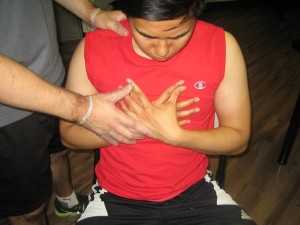A collapsed lung occurs if air moves into the space amidst the chest wall as well as the lung. Once air accumulates, the pressure within the pleural space increases and results to the collapse of the lung. The increasing pressure also averts the lung from growing when the individual tries to inhale which results to shortness of breath and chest pain.
https://www.youtube.com/watch?v=i-sZzZ4TMnY
What are the signs?
- Chest pain that is generally abrupt and piercing in quality
- Rapid breathing and heart rate
- Shortness of breath
- Coughing
- Fatigue
- Bluish-tinged skin
The increasing pressure also averts the lung from growing when the individual tries to inhale which results to shortness of breath and chest pain.
Management of a collapsed lung
The treatment for this injury is based on the underlying cause, extent of damage and seriousness of the condition.
Some of the treatment options include:
- Monitoring – for a minor case without any symptoms, the lung might re-inflate on its own. The individual should be closely monitored for any signs of respiratory or heart issues.
- Oxygen – supplemental oxygen might be started for a minor case of a collapsed lung. The individual is monitored if his/her condition stays stable.
- Percutaneous chest tube drainage – if the collapsed lung is wide or there is difficulty breathing, a small-sized plastic tube is introduced into the pleural area to get rid of the air.
- Needle aspiration – a needle linked to a syringe is used to remove the air via suction. This is introduced into the chest cavity.
- Open chest thoracotomy – this involves the creation of an incision to allow a chest tube to get rid of air under suction pressure.
- Chemical pleurodesis – a chemical irritant is introduced into the pleural space to attach the outside of the lung to the chest cavity.
- Mechanical pleurodesis – this technique is carried out by a surgeon who utilizes a section of dry gauze to toughen the pleural membrane
- Video-assisted thoracoscopic surgery
Quick Note / Disclaimer
The material posted on this page on a collapsed lung is for learning and educational purposes only. To learn how the injury is properly managed, register for a first aid and CPR course with TorontoFirst Aid.

